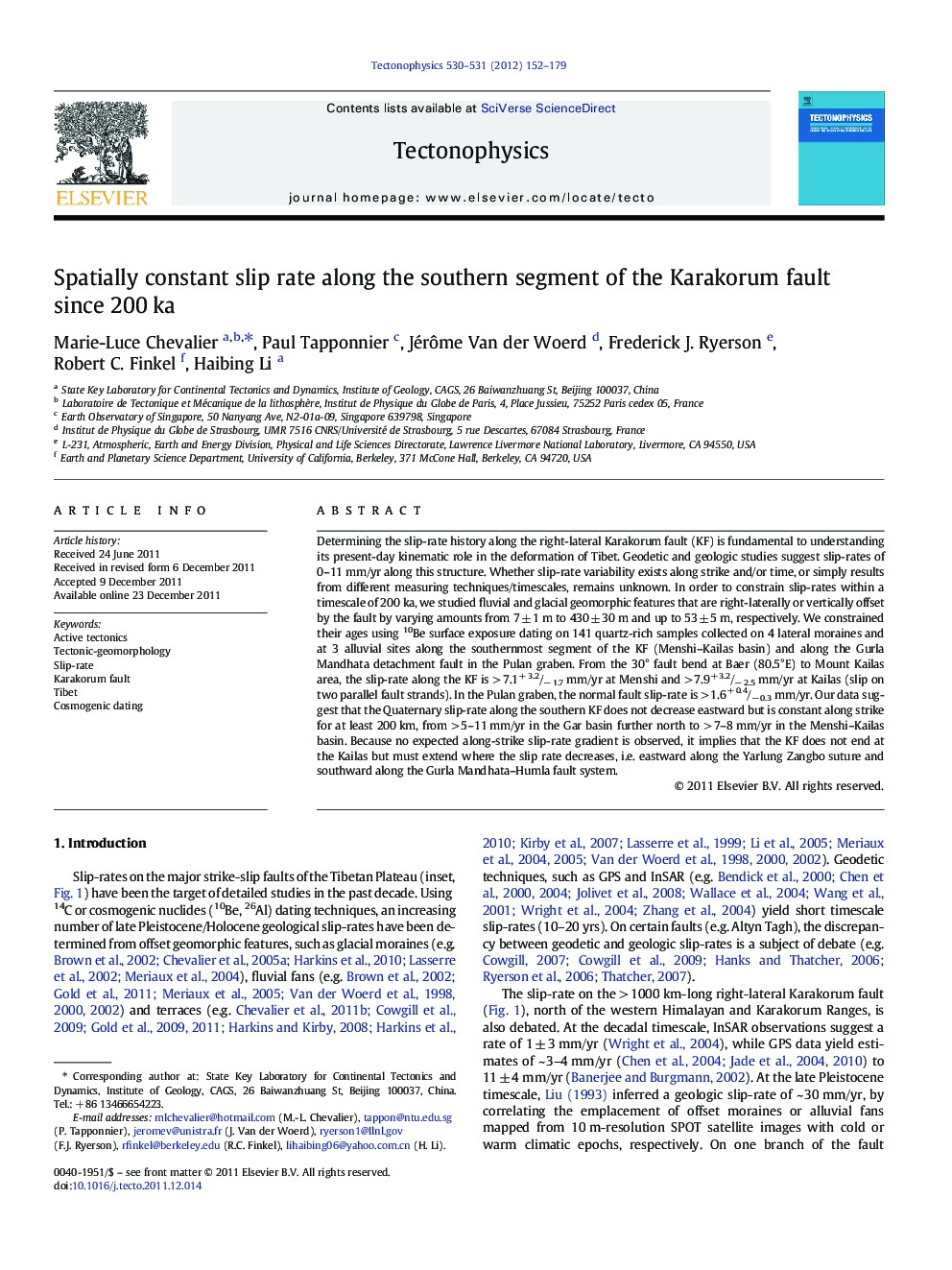| کد مقاله | کد نشریه | سال انتشار | مقاله انگلیسی | نسخه تمام متن |
|---|---|---|---|---|
| 6434265 | 1636827 | 2012 | 28 صفحه PDF | دانلود رایگان |

Determining the slip-rate history along the right-lateral Karakorum fault (KF) is fundamental to understanding its present-day kinematic role in the deformation of Tibet. Geodetic and geologic studies suggest slip-rates of 0-11 mm/yr along this structure. Whether slip-rate variability exists along strike and/or time, or simply results from different measuring techniques/timescales, remains unknown. In order to constrain slip-rates within a timescale of 200 ka, we studied fluvial and glacial geomorphic features that are right-laterally or vertically offset by the fault by varying amounts from 7 ± 1 m to 430 ± 30 m and up to 53 ± 5 m, respectively. We constrained their ages using 10Be surface exposure dating on 141 quartz-rich samples collected on 4 lateral moraines and at 3 alluvial sites along the southernmost segment of the KF (Menshi-Kailas basin) and along the Gurla Mandhata detachment fault in the Pulan graben. From the 30° fault bend at Baer (80.5°E) to Mount Kailas area, the slip-rate along the KF is > 7.1+ 3.2/â 1.7 mm/yr at Menshi and > 7.9+ 3.2/â 2.5 mm/yr at Kailas (slip on two parallel fault strands). In the Pulan graben, the normal fault slip-rate is > 1.6+ 0.4/â 0.3 mm/yr. Our data suggest that the Quaternary slip-rate along the southern KF does not decrease eastward but is constant along strike for at least 200 km, from > 5-11 mm/yr in the Gar basin further north to > 7-8 mm/yr in the Menshi-Kailas basin. Because no expected along-strike slip-rate gradient is observed, it implies that the KF does not end at the Kailas but must extend where the slip rate decreases, i.e. eastward along the Yarlung Zangbo suture and southward along the Gurla Mandhata-Humla fault system.
Highlights⺠We determined minimum slip-rates across the two main strands of the southern KF. ⺠The slip-rates here (> 7-8 mm/yr) are similar to what we found at Manikala to the north. ⺠The KF slip-rate is fast and constant along strike. ⺠The KF does not end at the Kailas but continues eastward and in the Pulan graben. ⺠At Pulan, the vertical rate is > 1.6 mm/yr, comparable to other south Tibet graben.
Journal: Tectonophysics - Volumes 530â531, 20 March 2012, Pages 152-179